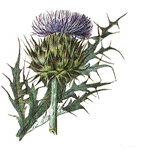Papers in the Biological Sciences

Svata M. Louda Publications
Document Type
Article
Date of this Version
2000
Abstract
A review of information on the release of Rhinocyllus conicus to control of Carduus spp. thistles in North America suggests at least 8 lessons for future biological control efforts. These lessons include the need for: 1) better a priori quantification of the occurrence and ecological effects of the weed; 2) improved incorporation of ecological criteria to supplement the phylogenetic information used to select plants for pre-release testing; 3) increased assessment of plausible direct and indirect ecological interactions when an agent looks promising but feeding tests suggest it is not strictly monophagous, including ecological factors determining host use and limiting population growth; 4) quantitative evaluation of the efficacy of the proposed biological solution, including evidence the agent can reduce persistence and regeneration of the weed; 5) more evidence on alternative control methods; 6) expanded review, both prior to release and periodically afterward; 7) addition of post-release evaluations and redistribution control; and, finally, 8) a rethinking of the situations that qualify for the use of biological control releases.


Comments
Published in Proceedings of the X International Symposium on Biological Control of Weeds, 4-14 July 1999, Montana State University, Bozeman, Montana, USA. Neal R. Spencer [ed.]. pp. 187-193 (2000)